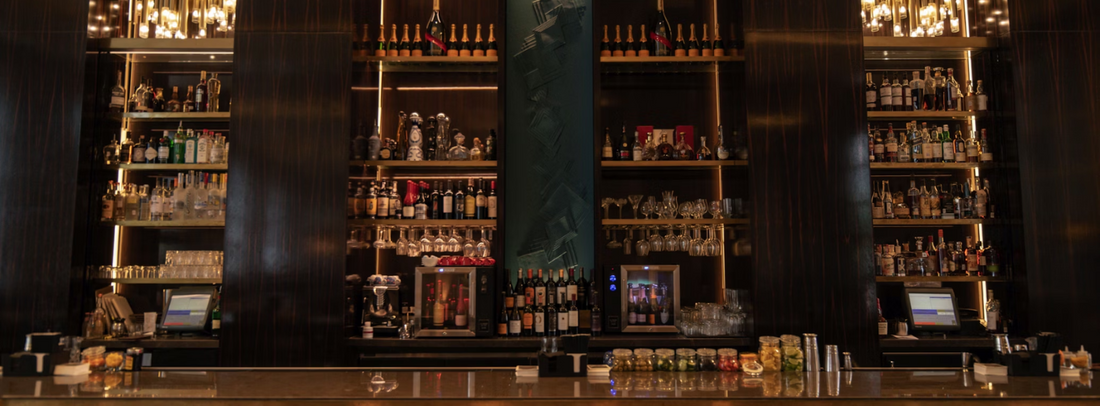Speakeasies are hidden bars that were popular in the 1920s. They were known for their secret locations, stylish interiors, and delicious drinks. Today, speakeasies are making a comeback. This article will explore what speakeasy is, their history, and what it takes to open one.
- What Is Food Hall? Benefits of Food Hall for Vendors
- What Is the Hospitality Industry? Different Sectors of the Hospitality Industry
- Guideline to Create the Perfect & Profitable Bar Food Menu
Understanding Speakeasy
What Is A Speakeasy?
A speakeasy is a clandestine establishment that sells alcoholic beverages, often during periods of prohibition or legal restrictions on alcohol consumption. These establishments typically operate in secret locations, often behind a façade or disguised as another type of business. The term "speakeasy" derives from the practice of speaking quietly or in hushed tones to avoid attracting attention from authorities.
What Is a Speakeasy Room?
A speakeasy room is a specific space within a speakeasy that is designed to provide a private and discreet environment for patrons. These rooms may be located behind hidden doors, in basements, or in other secluded areas. They often feature comfortable seating, dim lighting, and a cozy atmosphere.
History Of Speakeasy
Speakeasies emerged during Prohibition (1920-1933) as secret bars selling illegal alcohol. They were hidden in basements, back alleys, and disguised as legitimate businesses. Despite the risks, speakeasies thrived, offering a sense of rebellion and social freedom.

Characteristics of a Speakeasy
Speakeasies, with their hidden locations, stylish interiors, and illicit charm, have captivated imaginations for generations. In this section, we will explore the key characteristics that make these secret bars so appealing to patrons and enthusiasts alike.
Hidden Locations and Secret Entrances
- Disguised as legitimate businesses: Often operated as bookstores, barber shops, or laundromats.
- Secret passages: Hidden behind bookshelves, paintings, or wallpaper.
- Password or knock system: A specific phrase or code used to gain entry.
Ambiance and Decor
- Dim lighting: To create a cozy and intimate atmosphere.
- Jazz music: The soundtrack of the speakeasy era, often played live by small bands.
- Vintage style: Decorated with antique furniture, old photographs, and art deco elements.
Menu and Drinks
- Bootlegged liquor: Smuggled alcohol from other countries or illegally produced domestically.
- Signature cocktails: Unique and creative drinks often associated with the speakeasy era.
- Limited food options: Often focused on light snacks or finger foods.
Clientele
- Wealthy patrons: Many speakeasies were frequented by the affluent, who could afford the high prices and exclusivity.
- Celebrities: Actors, musicians, and other public figures often sought out speakeasies for their privacy and entertainment.
Modern-Day Speakeasies
In recent years, there has been a resurgence of speakeasy-inspired bars and clubs. This revival is driven by a desire for nostalgia, exclusivity, and a unique experience.
Key Features and Characteristics of Modern Speakeasies
- Hidden locations: While not always as secretive as their Prohibition-era counterparts, modern speakeasies often feature hidden entrances, discreet signage, or reservation-only policies.
- Vintage decor: Authentic or recreated vintage decor, including dim lighting, antique furniture, and classic artwork.
- Craft cocktails: A focus on expertly crafted cocktails using high-quality ingredients and innovative techniques.
- Live music: Many modern speakeasies offer live music performances, often featuring jazz or blues bands.
- Social atmosphere: A welcoming and inviting atmosphere that encourages socializing and networking.
Challenges and Opportunities for Contemporary Speakeasies
- Competition: The growing popularity of speakeasy-inspired bars has led to increased competition.
- Changing consumer preferences: As tastes evolve, speakeasies must adapt to meet the demands of a changing clientele.
- Legal and regulatory challenges: Navigating licensing requirements, noise ordinances, and other regulations can be complex.
- Opportunities for innovation: Modern speakeasies have the opportunity to innovate by incorporating new trends, such as unique flavor combinations, innovative bartending techniques, and immersive experiences.

How To Open A Speakeasy Bar
Opening a speakeasy bar can be a rewarding endeavor, but it requires careful planning and execution. Here are some key steps to consider:
- Legal Considerations
- Obtain necessary permits and licenses: Ensure you have the appropriate licenses for serving alcohol and operating a bar.
- Comply with local regulations: Understand and adhere to zoning laws, noise ordinances, and other relevant regulations.
- Location and Venue
- Choose a suitable location: Consider factors such as foot traffic, accessibility, and nearby attractions.
- Create a hidden or discreet entrance: Designate a secret entrance or use a hidden location to maintain the speakeasy atmosphere.
- Interior design: Create a vintage-inspired ambiance with dim lighting, antique furniture, and decorative elements.
- Menu and Bar Service
- Develop a unique cocktail menu: Offer classic cocktails with a modern twist, as well as signature creations.
- Source quality ingredients: Ensure you have access to high-quality spirits and mixers.
- Hire skilled bartenders: Train your staff to create exceptional cocktails and provide excellent customer service.
- Marketing and Branding
- Create a unique brand identity: Develop a memorable name, logo, and tagline.
- Utilize social media: Promote your speakeasy through platforms like Instagram, Facebook, and TikTok.
- Leverage word-of-mouth marketing: Encourage satisfied customers to spread the word about your establishment.
- Customer Experience
- Create a welcoming atmosphere: Provide a comfortable and inviting environment for patrons.
- Offer live music or entertainment: Consider live jazz or other forms of entertainment to enhance the speakeasy experience.
- Provide exceptional customer service: Train your staff to be friendly, knowledgeable, and attentive to customer needs.
- Financial Planning
- Develop a business plan: Outline your financial projections, marketing strategy, and operational plan.
- Secure funding: Obtain the necessary capital to cover startup costs, including rent, equipment, and inventory.
- Manage your finances effectively: Track your expenses and revenue to ensure profitability.
- Operational Challenges and Solutions
- Address noise complaints: Implement soundproofing measures and limit noise levels.
- Manage inventory and supply chain: Ensure a consistent supply of high-quality ingredients.
- Deal with law enforcement: Be prepared to address any legal issues or inspections.
Remember, opening a speakeasy bar requires dedication, creativity, and a passion for the craft. By carefully considering these factors and addressing potential challenges, you can create a successful and memorable establishment.
Conclusion
Speakeasies, with their hidden locations, stylish interiors, and expertly crafted cocktails, offer a unique and captivating experience. Despite the challenges of operating such a bar, their enduring appeal continues to draw patrons seeking a nostalgic escape or a memorable night out.







